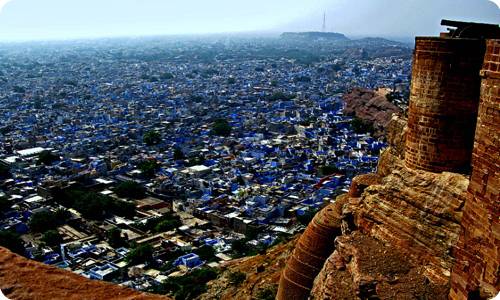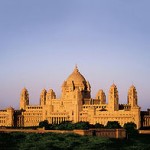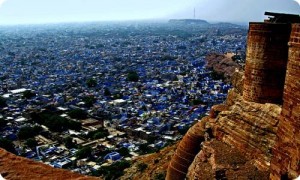 Jodhpur, the heart of Rajasthan and the majestic jewel of her eternal crown, illuminate the Thar, enriching the desert with entrepreneurship, scholarship and art. Set at the edge of the Thar Desert, Jodhpur is the second largest city in Rajasthan. This imperial city was the capital of the Marwar state. A high wall -10 kms long with 8 gates and innumerable bastions encompasses the city. It is also referred as the Blue City due to the indigo tinge of the whitewashed houses around the Mehrangarh Fort. Jodhpur is a popular tourist destination, featuring many palaces, forts and temples, that bring alive the historic grandeur of this city. The bazaars of Jodhpur have a range of items from tie & dye textiles, embroidered leather shoes, lacquer ware, antiques, carpets and puppets to the exquisite Rajasthani textiles, clay figurines, miniature camels and elephants, marble inlay work and classic silver jewellery. Jodhpur lies near the geographic center of Rajasthan state, which makes it a convenient base for travel in a region much frequented by tourists. Jodhpur was founded by Rao Jodha in 1459 and also known as Cultural capital, is a popular tourist destination featuring many palaces, forts and temples set in the stark landscape of the Thar Desert. The city is known as the Sun City for the bright sunny weather it enjoys all year, it is also referred to as the Blue city due to the indigo tinge of the white washed houses around the Mehrangarh Fort. Jodhpur lies near the geographic Centre of Rajasthan State which makes it a convenient base for transit is a region which frequented by tourists. The old city of Jodhpur is surrounded by a thick stone wall.
Jodhpur, the heart of Rajasthan and the majestic jewel of her eternal crown, illuminate the Thar, enriching the desert with entrepreneurship, scholarship and art. Set at the edge of the Thar Desert, Jodhpur is the second largest city in Rajasthan. This imperial city was the capital of the Marwar state. A high wall -10 kms long with 8 gates and innumerable bastions encompasses the city. It is also referred as the Blue City due to the indigo tinge of the whitewashed houses around the Mehrangarh Fort. Jodhpur is a popular tourist destination, featuring many palaces, forts and temples, that bring alive the historic grandeur of this city. The bazaars of Jodhpur have a range of items from tie & dye textiles, embroidered leather shoes, lacquer ware, antiques, carpets and puppets to the exquisite Rajasthani textiles, clay figurines, miniature camels and elephants, marble inlay work and classic silver jewellery. Jodhpur lies near the geographic center of Rajasthan state, which makes it a convenient base for travel in a region much frequented by tourists. Jodhpur was founded by Rao Jodha in 1459 and also known as Cultural capital, is a popular tourist destination featuring many palaces, forts and temples set in the stark landscape of the Thar Desert. The city is known as the Sun City for the bright sunny weather it enjoys all year, it is also referred to as the Blue city due to the indigo tinge of the white washed houses around the Mehrangarh Fort. Jodhpur lies near the geographic Centre of Rajasthan State which makes it a convenient base for transit is a region which frequented by tourists. The old city of Jodhpur is surrounded by a thick stone wall.
History
 Jodhpur, was founded by Rao Jodha, the chief of a clan Known as the Rathores in 1459. The Afghan invader Mohammed Ghori drove the Rathores from their former homeland of Kannauj and they fled to Pali, a short way from Jodhpur.It was the marriage between Rathore Siahji and the sister of a local prince that enabled the Rathores to prosper and establish a power base so strong that their capital at Mandore proved inadequate. ( Besides, it was easy to attack). The new place to they moved ofered more security with its natural fortifications and formidable fortress. Rao Jodha did the standard thing: he named the place after himself (jodhpur) and further prosperity of the clan, especially the expansion of their territory in Rajasthan
Jodhpur, was founded by Rao Jodha, the chief of a clan Known as the Rathores in 1459. The Afghan invader Mohammed Ghori drove the Rathores from their former homeland of Kannauj and they fled to Pali, a short way from Jodhpur.It was the marriage between Rathore Siahji and the sister of a local prince that enabled the Rathores to prosper and establish a power base so strong that their capital at Mandore proved inadequate. ( Besides, it was easy to attack). The new place to they moved ofered more security with its natural fortifications and formidable fortress. Rao Jodha did the standard thing: he named the place after himself (jodhpur) and further prosperity of the clan, especially the expansion of their territory in Rajasthan
Jodhpur lies on the strategic Delhi-Gujrat trading route and the people benefited from the traffic of opium, copper, silk,sandelwood, dates and cofee. The trade boosted an economy scarred by military conquests.The Mughals wanted a share of the riches and control of Jodhpur. The least bloody way was the marriage between Emperor Akbar and Rao Udai Singh’s sister. The alliance ensured that the Rathores received military aid from the Mughals for their campaigns in Gujarat.But the Mughal alliance ran into problems after emperor Akbar’s death. In the mid 17th century, Jaswant Singh joined Emperor Shah Jahan’s forces against Aurengzeb pillaged Jodhpur and its citizens were forcibly converted to Islam.
Jaswant Singh’s son Ajit Singh who was then the Maharaja, was murdered and the Mughals staked their claim to the thorne.His Infant son Ajit Singh II went underground and after 30 years in hiding in the hills, returned to jodhpur after Aurengzeb’s death (1707) and recaptured the city of his birth.
The 18th century saw many bloody battles between Jodhpur and the other princely states in Rajasthan, Jaipur and Udaipur and Udaipur. Ajit Singh’s successor Maharaja Abhai Singh captured Ahmedabad and later in 1818, Jodhpur signed a treaty with the British, a strategic treaty but a treaty nonetheless. The Rathores lost some of the honor , they had preserved for so many centuries but the trety ensured the kingdom could develop with the benefits of relative peace and prosperity.
The last Maharaja before Independence Umaid Bhavan is named-is the grandfather of the present Maharaja Gaj Singh (whose name is a happy combination of elephant and tiger).
Places of Interest
UMAID BHAWAN PALACE, JODHPUR
Built by Maharaja Umaid Singh ( 1929 – 1942 ) and named after him, this exquisite Palace is also known as Chittar Palace because of the local chittar sandstone used in it. It is a splendid example of Indo-colonial and art deco architecture of the 30s. A unique feature of this palace is the fact that the manually chiselled sandstone blocks have been put together in a special system of interlocking. There is no mortar binding. A portion of the palace has been converted into a hotel, the other remains on view to visitors in the form of an excellent museum which houses model aeroplanes, weapons, antique clocks, bob watches, priceless crockery and hunting trophies. Both sections retain the ambience of royal splendour.
Entry fees:
Indian -INR 15.00
Foreigner -INR 50.00
Timings -09:00 AM to 05:00 PM
GOVT. BANGUR MUSEUM:
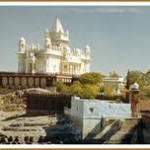 This Museum was opened for public on 19 July, 1991. The main attractions of this museum is the idol of Sukali Mata brought from Auwa. The idol of Vishnu, paintings from the Jodhpur school of painting and a rich collection of coins and idols are other attractions. It is situated in the Pali City, near the old bus stand.
This Museum was opened for public on 19 July, 1991. The main attractions of this museum is the idol of Sukali Mata brought from Auwa. The idol of Vishnu, paintings from the Jodhpur school of painting and a rich collection of coins and idols are other attractions. It is situated in the Pali City, near the old bus stand.
Timings : 10:00 AM to 04:00PM, closed on a Gazetted Holidays. Entry Fees for General Rs.3.00 and For Students Rs.1.00.
MEHRANGARH FORT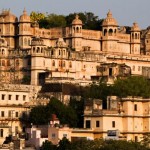
Perched on a 150 m high hill its sprawl is the most formidable and magnificent fort in Rajasthan. Rao Jodha founded it in 1459 but subsequent rulers of Jodhpur have also added to it over the centuries. A meandering road leads to the from the city 5 kms below. Battle scars of canon ball hit by attacking armies of Jaipur can still be seen on the second gate. To the left is chhatri of Kirat Singh Soda, a soldier who fell on the spot while defending the fort against the armies of Amber. There are seven gates, which include Jayapol meaning victory built by Maharaja Man Singh to commemorate his victories over Jaipur and Bikaner armies.Fatehpol also meaning victory gate was built by Maharaja Ajit Singh to mark the defeat of Mughals. The palm imprints still attract devotional attention and are covered by vermilion paste and paper-thin silver foil.
FORT MUSEUM
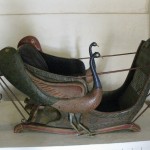 This is one of the finest museums in Rajasthan and certainly the best laid out. In the palanquin section of the fort museum, you can see an interesting collection of old royal palanquins including the elaborate domed gilt Mahadol palanquin, which was won in a battle from the Governor of Gujarat in 1730. The museum exhibits the heritage of the Rathores in arms, costumes, paintings and decorated period rooms.
This is one of the finest museums in Rajasthan and certainly the best laid out. In the palanquin section of the fort museum, you can see an interesting collection of old royal palanquins including the elaborate domed gilt Mahadol palanquin, which was won in a battle from the Governor of Gujarat in 1730. The museum exhibits the heritage of the Rathores in arms, costumes, paintings and decorated period rooms.
PHOOL MAHAL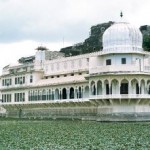
The grandest of Mehrangarh’s period rooms, the Phool Mahal was in all likelihood a private and exclusive chamber of pleasure dancing girls. It has a ceiling rich in gold filigree. The Phool Mahal was created by Maharaja Abhaya Singh (1724-1749) and the gold came from Ahmedabad in Gujarat as war booty after his famous victory over the rebellious Mughal governor, Sarbuland KhanThepaintings, royal portraits and the ever-popular raga mala, came much later, in the reign of Jaswant Singh II.
JHANKI MAHAL
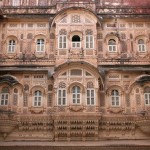 The Jhanki Mahal, from where the royal ladies watched the official proceedings, in the courtyard, today houses a rich collection of the royal cradles. The cradles are decorated with gilt mirrors and figures of fairies, elephant and birds.
The Jhanki Mahal, from where the royal ladies watched the official proceedings, in the courtyard, today houses a rich collection of the royal cradles. The cradles are decorated with gilt mirrors and figures of fairies, elephant and birds.
Entrance fees : Rs 250 (including
camera, with audio guide)
Telephone No. 0291-2548790
Video Camera Rs. 200
JASWANT THADA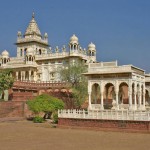
On the way down from the fort, on left is Jaswant Thada, the graceful marble cenotaph of Maharaja Jaswant Singh II. His son Maharaja Sardar Singh built this monument known as the Taj Mahal of Marwar in the memory of Maharaj Jaswant Singh II of Jodhpur. The main memorial has been built like a temple with intricately carved marble stone. A visit to this structure is through the rocky hills giving it a secluded and a mystic aura.
Entrance fees: Indian Rs.10
Foreigner Rs.20
Camera Fees: Rs.25
Movie Camera : Rs.50
Timings: 9 AM to 5 PM
GOVERNMENT MUSEUM
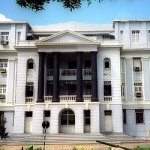 This museum nestles in the middle of Umaid Public Garden and houses a rich collection of exhibits – armoury, textiles, local art and crafts, miniature paintings, portraits of rulers, manuscripts and images of Jain Tirthankaras. Umaid Public Garden also houses a zoo.
This museum nestles in the middle of Umaid Public Garden and houses a rich collection of exhibits – armoury, textiles, local art and crafts, miniature paintings, portraits of rulers, manuscripts and images of Jain Tirthankaras. Umaid Public Garden also houses a zoo.
RAI-KA-BAG PALACE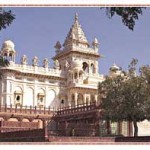
This palace is situated near Raika Bag palace railway station. It was constructed in 1663 by Hadiji, queen of king jaswant Singh-I. King Jaswant Singh-II liked this palace very much. He mostly stayed in the octagonal bunglow of this palace. In 1883 when Swami Dayanand Saraswati came to Jodhpur, his sermons were arranged for the public in the public ground of this palace. Even Jaswant Singh used to listen to Swami Dayanand in this palace only. Now income tax office functions in this palace
SIDDHNATH
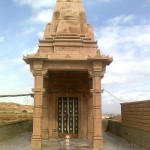 Siddhnath Shiv temple is located between Takhat Sagar hills. On the road going from the right of filter house on Jodhpur-Chopasani Road, on crossing the stairs made by cutting rocks, one can reach Siddhnath temple. Many years ago it was an absolutely deserted place. And because of that, a hermit Veetragi Narain Swami started staying here. He was a highly worshipped and respected saint, known in the nearby areas. Once a handicapped saint named Gaurishanker, later known as Nepali Baba, came to this place. He had only four fingers in each of his hand and foot. He made a big temple by cutting stones, which is now known as Siddhnath.
Siddhnath Shiv temple is located between Takhat Sagar hills. On the road going from the right of filter house on Jodhpur-Chopasani Road, on crossing the stairs made by cutting rocks, one can reach Siddhnath temple. Many years ago it was an absolutely deserted place. And because of that, a hermit Veetragi Narain Swami started staying here. He was a highly worshipped and respected saint, known in the nearby areas. Once a handicapped saint named Gaurishanker, later known as Nepali Baba, came to this place. He had only four fingers in each of his hand and foot. He made a big temple by cutting stones, which is now known as Siddhnath.
GANESH TEMPLE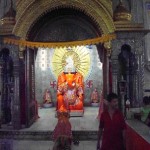
The area which is called Ratanada was named after a dog called Rata. About 150 years ago a teacher Radidas in a place called Gorunda saw a statue of Vinayakji in the hills of Ratanada. The statue is eight feet high and five feet wide.
Around Jodhpur
MANDORE GARDEN
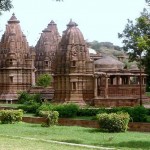 Mandore was the former capital of Maharajas of Marwar and is located about 5 miles north of Jodhpur but was later abandoned for the security of Mehrangarh fort. Here you will find the dewals or cenotaphs of Jodhpur’s former rulers.
Mandore was the former capital of Maharajas of Marwar and is located about 5 miles north of Jodhpur but was later abandoned for the security of Mehrangarh fort. Here you will find the dewals or cenotaphs of Jodhpur’s former rulers.
Unlike the usual chhatri-shaped cenotaphs typical of Rajasthan, they were built along the lines of a Hindu temple, four storeys high, with fine columns and an elegant spire, all in red sandstone. The most impressive is the dewal of Maharaja Ajit Singh (reigned 1678-1724). These cenotaphs are set in beautiful landscaped gardens. Nearby is the hall of heroes, dedicated to various deities and fabled Rajput folk heroes, whose statues are carved out of rock and painted in bright colours. Next door is a larger hall called “The Shrine of the Three Hundred Million, filled with brightly coloured images of the various Hindu Gods. As you climb up the hill, you come to the ruined city of Mandore, with its old palace. The beautiful Maharani’s cenotaphs set apart on a rocky outcrop is a ten-minute walk over the hill. Today its extensive gardens with high rock terrace make it a popular local attraction.
Timings: 8 AM to 8 PM
OSSIAN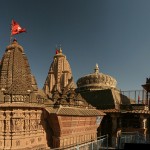
65 Kms from Jodhpur, lies ruins of an ancient city called Ossian. This city is famous for Brahmanical and Jain temples, which belong to 8th and 11th century. Surya or Sun temple and the Sachiya temples are famous for their beauty. The shikhar of Sachiya temple is clustered by two rows of turrets, an ambulatory and a large assembly hall with an elaborate ceiling. This town which was once a great trading centre is an oasis and houses an abundance of peacocks. The largest of the 16 Jain and Brahmanical temples is dedicated to Mahavira, the last of the Jain tirthankars. In the same area the Surya temple has fascinating images of Durga, Surya and Ganesh. The sculptural intricacy of the Osian temples rival that of any of the famous temples of the country, be it the Sun Temple of Konark, or the Hoysala temples of Karnataka.
KAYLANA LAKE
 Located 8 kms. West of Jodhpur, Kaylana lake was constructed in 1872 by Pratap Singh. It is spread over 84 square kilometers’ area. Earlier this area had palaces and gardens made by two rulers of Jodhpur-Bhim Singh and Takhat Singh. These were destroyed to make Kaylana lake. Near the lake is a Dak Bungalow of PHED.Boating facilities have also been made available for tourists here.
Located 8 kms. West of Jodhpur, Kaylana lake was constructed in 1872 by Pratap Singh. It is spread over 84 square kilometers’ area. Earlier this area had palaces and gardens made by two rulers of Jodhpur-Bhim Singh and Takhat Singh. These were destroyed to make Kaylana lake. Near the lake is a Dak Bungalow of PHED.Boating facilities have also been made available for tourists here.
GUDA BISHNOI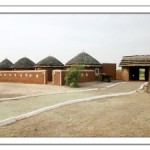
This village is inhabit ated by the Bishnoicommunity. They are staunch believers in the sanctity of plant and animal life. Villages are marked by Khejri trees and deers which thrive.
How to Reach Jodhpur
By Air
The airport is 5 km from city centre. The Indian Airlines office is south of the centre on Airport Road and is open daily from 10am to 1pm and 2pm to 4.30 pm. It has flights from Delhi, Mumbai, Udaipur and Jaipur.Jet Airways and Kingfisher also operates daily flights from Delhi and Mumbai and jaipur
By Rail
The city is well connected by the railway lines and trains are available from all major cities in the country for here. The booking office is on Station Road, between the railway station and Sojati Gate. The office is open from Monday to Saturday from 8 am to 5 pm and until 1.45 pm on Sunday.
By Road
RSTC buses and private luxury buses connect jodhpur with almost all major places of Rajasthan.
Local Transport
Means of transport in Jodhpur include Taxis, Auto-rickshaws, Tongas. Taxi stand is near the main railway station. Auto-rickshaws are best suited for traversing the narrow lanes of the old city. Jodhpur is a good place to explore by bicycle.
Facts
Population 3685681
Languages hindi,Marwadi
Literacy 81.5%
Longitude 73° 04′ E
Latitude 26° 18′ N
Area 75.50 sq kms
Submit your review | |
